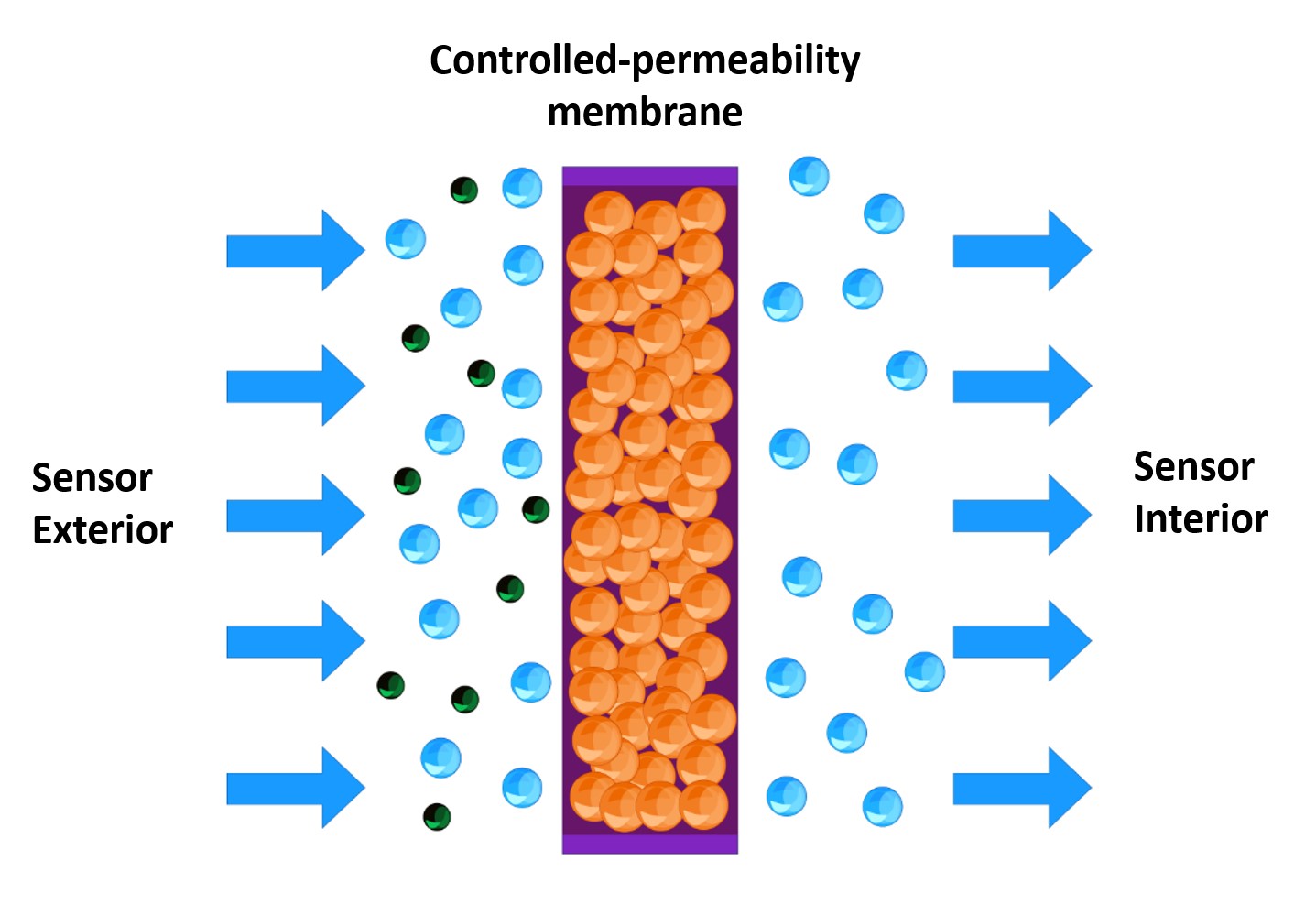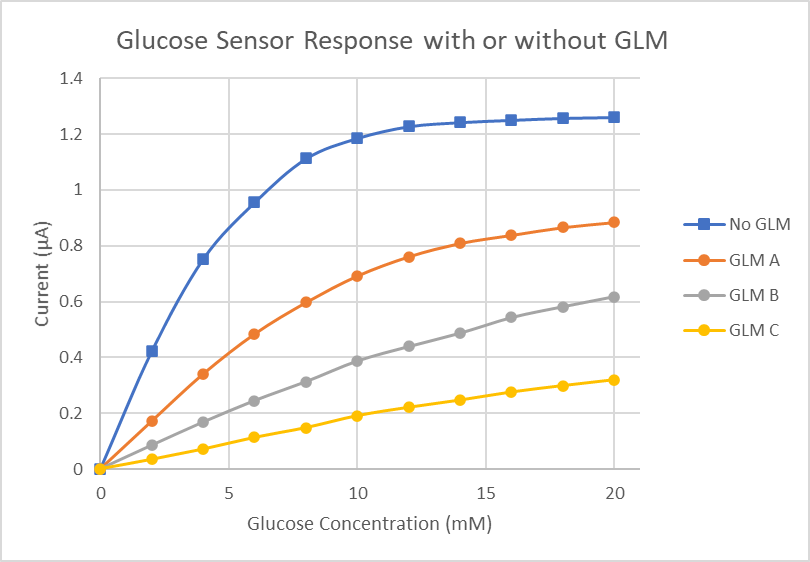MediShield™ Diffusion-Limiting Membrane Coatings
Implanted or wearable biosensors often require diffusion-limiting membrane coatings
to precisely control the transport of target analytes. To address this need,
Medical Surface has developed the MediShield™ Diffusion-Limiting Membrane Coatings
for biosensors, designed to regulate analyte diffusion and permeation.
MediShield™ GLM Coatings for Glucose Sensors
A key application is glucose sensors used in Continuous Glucose Monitoring (CGM) systems. These sensors are in continuous contact with body fluids, enabling real-time monitoring of glucose levels. To ensure accurate and reliable measurements, CGM sensors typically require a glucose-limiting membrane (GLM) that controls the rate of glucose transport to the sensing layer while reducing the ingress of interfering species. MediShield™ GLM Coatings have been specifically developed to meet these performance requirements for glucose sensing applications.
This figure illustrates the performance of MediShield™ GLM Coatings.
An uncoated glucose sensor exhibits a limited linearity range due to the high glucose-to-oxygen
ratio in the physiological environment. Our GLM coatings selectively restrict glucose diffusion
while allowing maximal oxygen transport to the sensing layer.
The degree of glucose restriction can be precisely controlled through our coating process.
As the GLM coating becomes increasingly restrictive to glucose permeation - where GLM B is more
restrictive than GLM A, and GLM C is more restrictive than GLM B - the linearity of glucose
detection correspondingly improves.
In addition to GLM coatings, we also offer biocompatible coatings for biosensors. This biocompatible coating layer does not significantly restrict the permeability of glucose or other relevant molecules, while effectively minimizing protein adsorption and biofouling.


